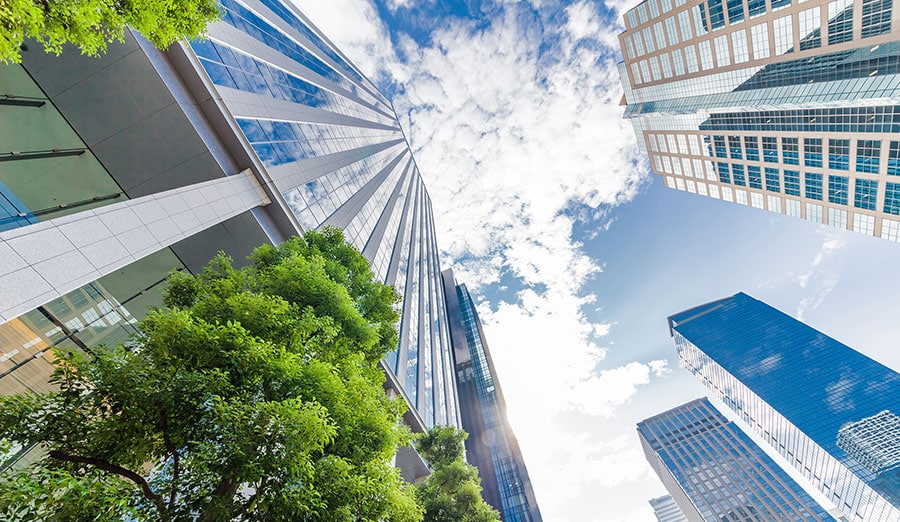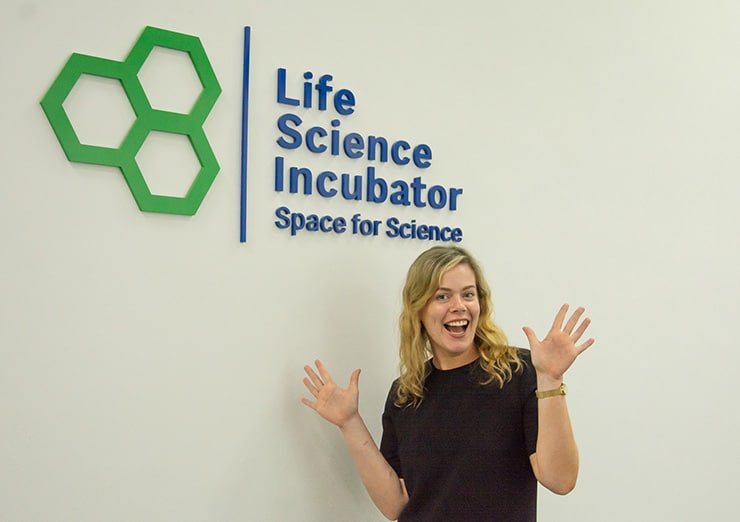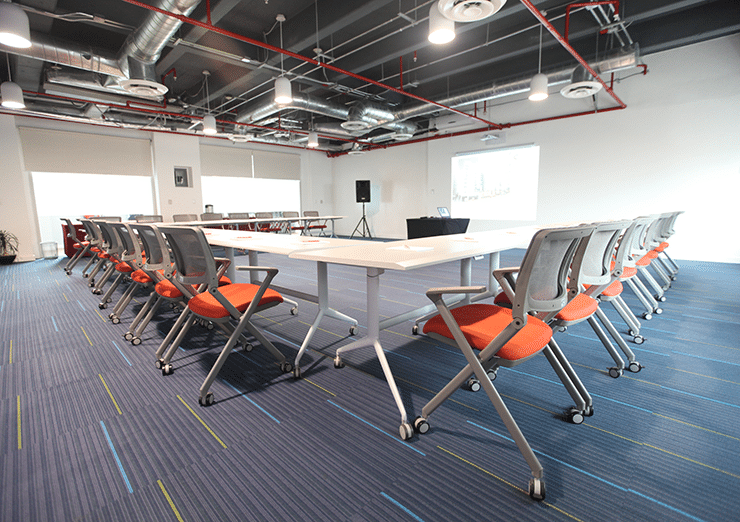China 30.60
Green Buildings

Planning and engineering green solutions to transform the Building Sector
China is the factory of the world and there are countless industrial facilities all over the country. To achieve China’s energy and environmental goals, the number of green buildings needs to be increased, while existing industrial buildings need to be refurbished.
The Green Buildings seminar in May 2022 outlined market opportunities, challenges and best practices for German companies in the field of green buildings in China.
Ms. XU Conghua, Project Manager Building, Energy & Environment, econet china, gave a market overview and described latest trends in the green building sector. With 2.23 billion tce and nearly 5 billion tons of CO2 emissions in all related processes, the building sector is among top three industries with the highest energy consumption and emissions.
Therefore, green building standards were strengthened in recent years and the green transformation of the building sector is a key area to achieve China’s dual carbon targets. Ms. Xu also showed opportunities for German service providers and manufacturers, e.g. in the fields of planning, architecture and engineering solutions; energy-efficient systems for heating, ventilation and cooling; or building-integrated photovoltaics.
Benedikt Ertl, Regional Manager Asia, Delta ImmoTec GmbH, shared best practices on how to reduce the carbon footprint of new buildings on the example of the planning and construction of a new energy efficient Dräxlmaier plant in Shenyang. Practical approaches include utilization of factory roofs for solar power generation, effective building insulation, energy-efficient pumps and compressors, daylight-controlled lighting systems, and metering and consumption measurement systems.
Dr. Jochen Nippel, Managing Director Beijing Door Production Ltd., Hörmann Group, presented Hörmann’s approach to minimize its carbon footprint along the entire supply chain. The company’s comprehensive framework concept for ‘the green factory of the future’ not only covers green building design, but also aspects such as the optimization of logistics networks and material handling; energy-efficient production processes; or recycling and remanufacturing of parts and products.
The carbon footprint thinking is also reflected in a green product design. Hörmann door systems can lead to energy savings in production processes of manufacturers due to smart technologies such as integrated systems for door opening based on adjusted speed and needed height; or self-repair, failure analysis, and signal to call for external or remote maintenance.
Similar Contributions
More events
Have you met Niamh Madden?
Building relationships at work is key for Niamh Madden, then General Manager of the Life Science Incubator in Singapore.
Meeting rooms in Mexico City
German Centre Mexico is a great location for events. There is space for meetings, seminars, company parties, product launches and more.



